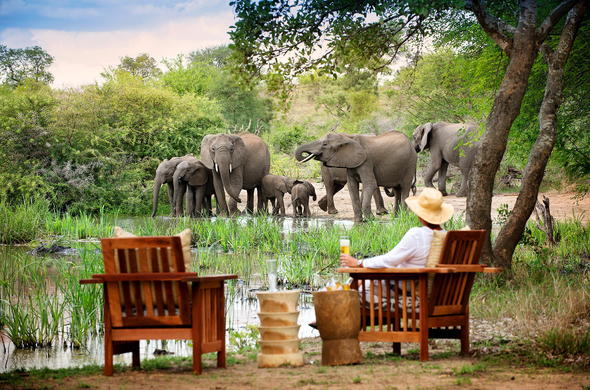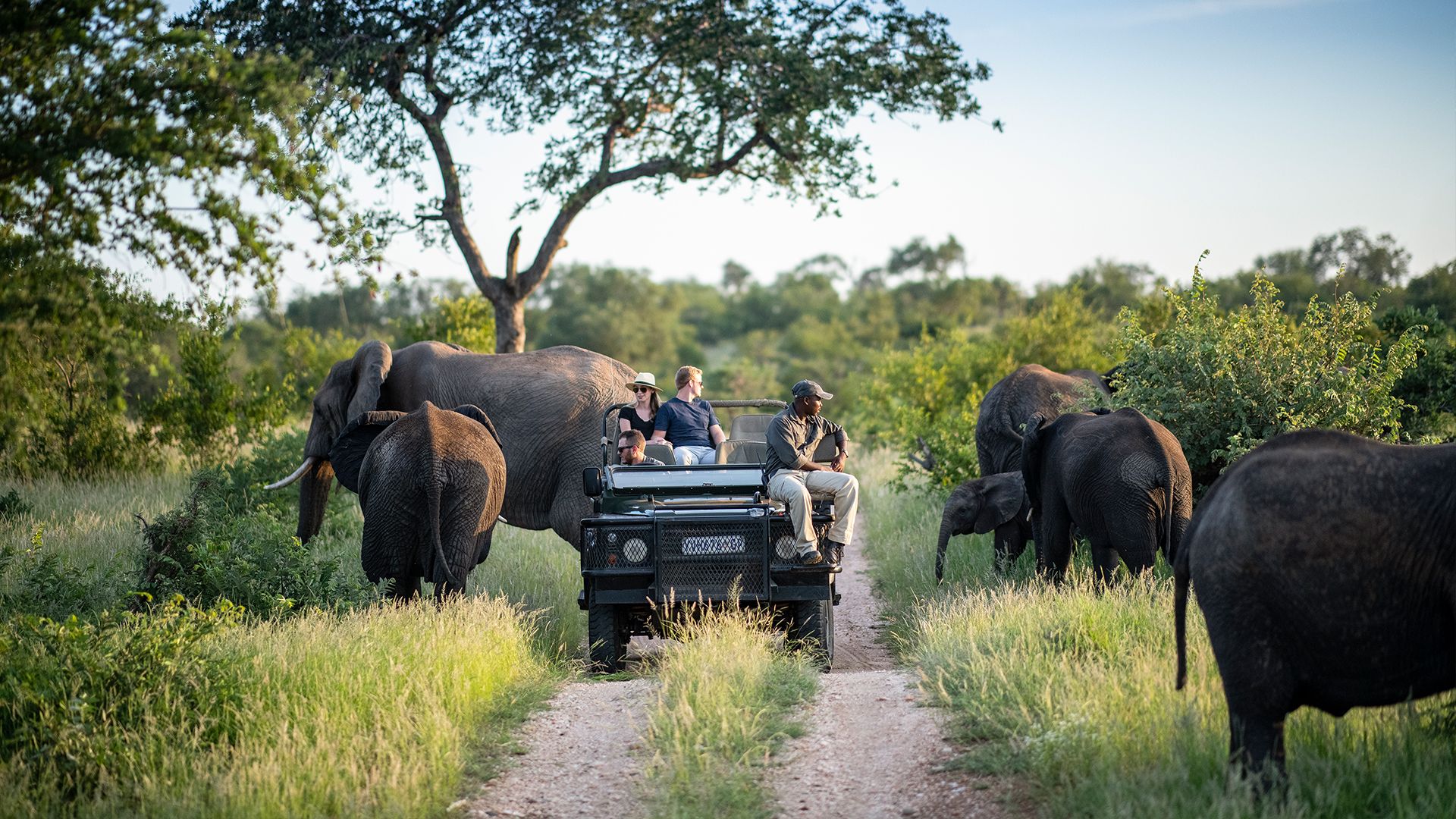Leading Factors to Select Kruger Park Safaris for Your Next African Adventure
Leading Factors to Select Kruger Park Safaris for Your Next African Adventure
Blog Article
Checking Out the Majestic Wild Animals and Scenic Landscapes of Kruger Park Safaris: A Memorable Experience Awaits
Kruger Park, a foundation of South Africa's all-natural heritage, offers a complex tapestry of wild animals and breathtaking landscapes, inviting expedition and involvement with its diverse environments. As visitors venture right into this expansive shelter, they encounter not just the iconic Big 5 yet also a wealth of other types that improve the park's biodiversity.
Overview of Kruger Park
One of South Africa's biggest and most renowned game reserves, Kruger National forest covers approximately 19,485 square kilometers in the northeastern region of the nation. Established in 1898, it is a foundation of preservation efforts, showcasing diverse ecological communities that include savannas, woodlands, and riverine woodlands. The park is home to an excellent variety of wildlife, with over 500 bird types and many creatures, reptiles, and plants, making it a biodiversity hotspot.
Kruger National Park is split into different areas, each offering one-of-a-kind landscapes and habitats, therefore improving wild animals watching possibilities. Visitors can explore the park through self-drive routes or led safaris, permitting for an immersive experience in nature. The park's framework consists of well-maintained roadways, remainder camps, and barbecue locations, making certain accessibility for all types of tourists.
Moreover, Kruger National forest plays a critical duty in education and study, adding to global conservation initiatives. The park's dedication to sustainable tourism promotes responsible wildlife watching, cultivating a much deeper recognition for South Africa's natural heritage. With its spectacular scenery and rich biodiversity, Kruger National forest continues to be a leading destination for adventure seekers and nature lovers alike.
The Huge Five Experience
Kruger National Park is renowned for supplying site visitors the possibility to encounter the famous Huge Five, that includes the lion, leopard, elephant, buffalo, and rhinoceros. This distinct opportunity to observe these stunning pets in their natural environment draws wild animals fanatics and experience applicants from around the globe.
The excitement of finding the Large Five is not merely concerning the animals themselves but likewise the context of their environment. Each safari offers a new adventure, as overviews share insights right into the habits, environments, and preservation efforts bordering these varieties. The evasive leopard, typically seen resting in the trees, showcases the appeal of agility and stealth, while the enforcing elephant herd highlights the importance of social structures within wildlife neighborhoods.

The Cape buffalo, understood for their unforeseeable nature, adds an element of exhilaration to any kind of safari. This immersive experience promotes a deeper admiration for wild animals and highlights the significance of preserving these unbelievable creatures for future generations.
Beautiful Landscapes and Ecosystems
Regularly commemorated for its spectacular beauty, the landscapes of Kruger National forest use a diverse tapestry of ecosystems that boost the safari experience. Extending almost 2 million hectares, the park is home to a plethora of environments, including savannahs, rivers, marshes, and forests. Each community is distinctly interwoven, developing a dynamic setting that supports an array of plants and fauna.
The savannahs, defined by vast meadows dotted with acacia and baobab trees, offer ideal grazing grounds for herbivores like wildebeests and zebras. In contrast, the dense woodlands and thickets use refuge for predators and smaller sized types, cultivating a rich biodiversity. The park's waterholes and rivers are lifelines for wildlife, have a peek at this website drawing in a huge selection of pets, particularly during the dry period.
This complex interplay of ecological communities not only sustains the park's legendary wildlife yet additionally presents visitors with magnificent vistas, from rolling levels to dramatic rocky outcrops. Whether going across open savannahs or discovering dense bushveld, the breathtaking landscapes of Kruger National forest guarantee to leave an enduring mark on every safari fanatic's heart.
Ideal Times to Go To
Comprehending the most click here for more effective times to see Kruger National Park can dramatically boost the safari experience. Kruger park safaris. The park experiences 2 primary seasons: the dry winter season from May to September and the damp summertime from October to April. Each season uses one-of-a-kind benefits for wild animals viewing and landscape admiration
During the dry season, animals congregate around water sources, making wild animals spotting much more predictable. The vegetation thins out, providing clearer presence for discoveries of the Large 5 and various other varieties. This duration is especially popular among travelers because of the beneficial conditions for video game drives and led strolls.
On the other hand, the damp season, characterized by lavish landscapes and vivid plants, is suitable for birdwatching lovers. Kruger park safaris. Migratory birds are plentiful, and the park becomes a haven for numerous avian species. In addition, this period notes the birth of many young pets, supplying a possibility to witness the interesting characteristics of wild animals communications
Eventually, the very best time to visit relies on personal choices, whether one seeks the simplicity of wild animals sightings or the elegance of a blooming community. No matter the season, Kruger National Park promises a memorable adventure for all that venture into its wild embrace.
Safari Tips and Standards

Take into consideration the moment of year when planning your safari. The dry season, from May to September, typically offers much better wildlife checking out opportunities. Wear neutral colors to blend into the setting, and stay clear of showy or bright clothes that might alarm pets.
Pack fundamentals such as binoculars, a video camera, sun block, and bug spray. Staying hydrated is vital-- carry sufficient water for your team. Additionally, bear in mind the park's wildlife; observe from a range and never attempt to feed or prompt animals, my company as this can modify their all-natural habits.
Engage with experienced overviews, who offer invaluable understandings and boost your understanding of the environment. Strategy your safari with perseverance and an open heart, enabling for spontaneous minutes that will produce extraordinary memories in this amazing landscape.
Final Thought
In verdict, Kruger Park uses an unmatched chance to involve with diverse wildlife and impressive landscapes. With careful planning and adherence to standards, a journey in Kruger Park promises to be both enhancing and memorable for all who begin on this trip.
Kruger Park, a keystone of South Africa's all-natural heritage, offers a complex tapestry of wild animals and awesome landscapes, inviting exploration and involvement with its diverse communities.Kruger National Park is split right into different areas, each offering special landscapes and habitats, therefore enhancing wild animals viewing possibilities. The park's rivers and waterholes are lifelines for wild animals, bring in a myriad of pets, particularly during the dry season.
Additionally, be mindful of the park's wild animals; observe from a range and never attempt to feed or prompt animals, as this can modify their natural actions.

Report this page